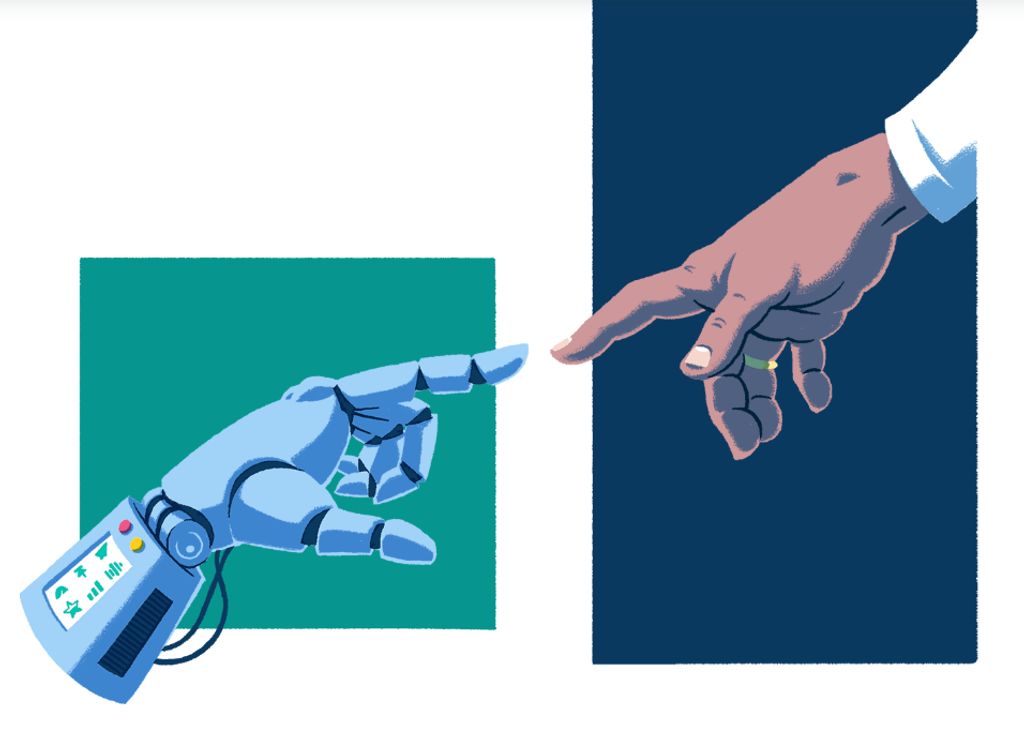In the race to build smarter, faster, more autonomous systems, it’s easy to forget one fundamental truth: technology only succeeds when it serves people. As enterprises accelerate their AI adoption, the conversation must shift from what AI can do to who it is built for.
At DXTech, we believe that being a Top AI Builder means more than engineering sophisticated algorithms — it means designing human-centered AI solutions that empower people, not replace them. Because in a world where technology evolves faster than regulation, trust, empathy, and usability are what sustain innovation at scale.
The Human Gap in Today’s AI Race
According to a 2024 Deloitte global survey, 73% of executives plan to increase their AI investments in the next 12 months. Yet, only 28% believe their organizations are “highly prepared” to manage the human impact of automation and AI-driven transformation.
This gap is not just a skills issue — it’s a design issue. Many AI deployments still prioritize technical capability over user adoption. Dashboards are powerful but unintuitive. Automated systems make decisions no one understands. Employees feel sidelined by tools they don’t trust or can’t control.

This “human gap” creates friction, resistance, and underutilization — what some experts call the adoption chasm. The result? Projects that look promising in pilot stages but fail to scale, as people struggle to integrate AI into their daily workflows.
At DXTech, we’ve seen this challenge firsthand in sectors from finance to government. The organizations that succeed are not those with the most advanced algorithms — but those that design AI systems with people at the center.
Human-Centered AI: A Framework for Enterprise Adoption
Designing human-centered AI means balancing automation with augmentation — building systems that enhance human judgment rather than replace it. Here are four principles DXTech applies when helping enterprises turn AI vision into real-world impact:
1. Understand the Human Context
AI should start with empathy, not data. Before writing a single line of code, our teams invest time in understanding the daily realities of the people who will use or be affected by the system — from customer service agents to financial analysts to urban planners.
We conduct field research, interviews, and workflow mapping to identify not just efficiency gaps, but emotional pain points: What frustrates employees most? What decisions cause the most uncertainty? Where does technology currently create friction rather than flow?
By grounding design in human insight, AI becomes a partner — not a black box.

2. Design for Trust and Transparency
Trust is the currency of digital transformation. Yet, 61% of global consumers say they’re concerned about how companies use AI, according to an IBM 2024 report. For enterprises, this means transparency is no longer optional — it’s a strategic differentiator.
At DXTech, we embed explainability layers directly into AI solutions. For instance, our financial analytics models include decision traceability dashboards that let analysts see why a prediction was made — not just the output itself.
When users understand how the system thinks, they’re more likely to trust it, use it, and even improve it. Transparency turns AI from a compliance checkbox into a source of competitive advantage.

3. Build for Collaboration, Not Isolation
One of the greatest myths of AI is that it will operate independently of human input. In practice, the most successful deployments are co-intelligent systems — environments where humans and machines continuously learn from each other.
In a recent PwC study, organizations that paired AI with human expertise achieved up to 33% higher productivity compared to those that automated in isolation.
That’s why DXTech’s AI solutions — from intelligent CRM assistants to AI-powered process orchestration tools — are designed for collaborative intelligence. Our frameworks ensure that human oversight, ethical review, and user feedback loops are part of the system architecture from day one.
It’s not about replacing teams. It’s about giving them superpowers.
4. Measure Impact in Human Terms
Enterprises often assess AI performance through technical KPIs — model accuracy, latency, throughput. But human-centered AI demands a broader lens: How does this solution affect trust, satisfaction, and engagement?
At DXTech, we combine quantitative metrics (e.g., cost savings, response times) with qualitative signals — user confidence, perceived fairness, and experience scores. This dual focus allows organizations to identify hidden barriers to adoption and continuously refine their systems.
A predictive model might achieve 95% accuracy, but if employees don’t trust its outputs or customers feel alienated, the initiative will underperform. Measuring what matters ensures that AI remains aligned with human goals.
From Tools to Experiences: Redefining AI’s Role
The next generation of enterprise AI won’t be defined by how many models are deployed — but by how seamlessly those models integrate into human workflows. As AI becomes more ubiquitous, the distinction between “user” and “system” will blur.
This is where human-centered design becomes a strategic imperative. It forces organizations to think beyond technology stacks and toward experiences:
- How does AI make employees feel more capable, not more replaceable?
- How can AI enhance creativity, not just compliance?
- How do we build governance frameworks that protect users without slowing innovation?

At DXTech, our AI Builders work hand-in-hand with client teams to co-design solutions that reflect their culture, context, and customers. By combining design thinking, data science, and change management, we help enterprises bridge the gap between vision and adoption — turning AI from an experiment into a scalable, trusted partner.
The Future of AI is Human

As global enterprises move from proof-of-concept to production, one message is clear: AI built for processes will always be replaceable; AI built for people will endure.
Human-centered design ensures AI aligns with the values, behaviors, and goals of its users. It makes technology empathetic, transparent, and adaptive — qualities that drive trust and long-term value.
At DXTech, we see this as the foundation of what it means to be a Top AI Builder. Our mission is to help organizations design AI ecosystems where innovation thrives because people do.
Whether you’re modernizing a government service, scaling an enterprise workflow, or building the next generation of customer experiences, the question isn’t just how fast you can build AI — it’s how human your AI can become.
The Human Edge of AI

The future of AI won’t be written by algorithms alone. It will be shaped by organizations that understand one essential truth: people are not variables in a process — they are the process.
When enterprises design AI systems that respect human insight, promote transparency, and enable collaboration, they don’t just improve operations — they redefine what intelligent work can look like.
At DXTech, we’re helping leading enterprises architect human-centered AI solutions that drive measurable business impact while strengthening trust and empowerment at every level. Because true innovation isn’t about replacing humans with machines — it’s about building technology that amplifies what humans do best.
